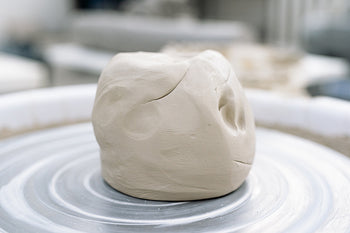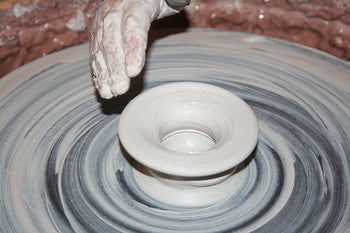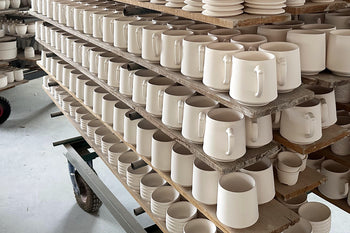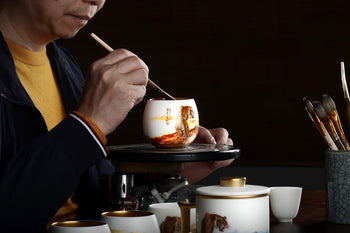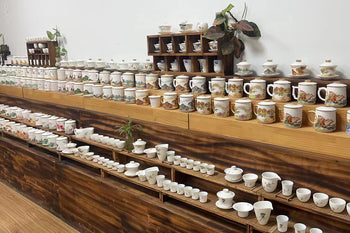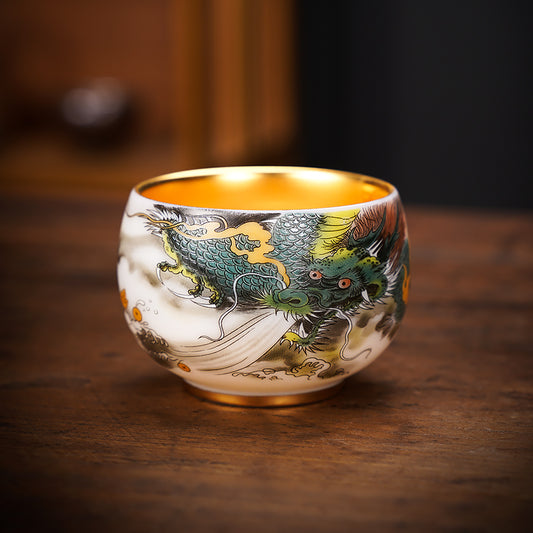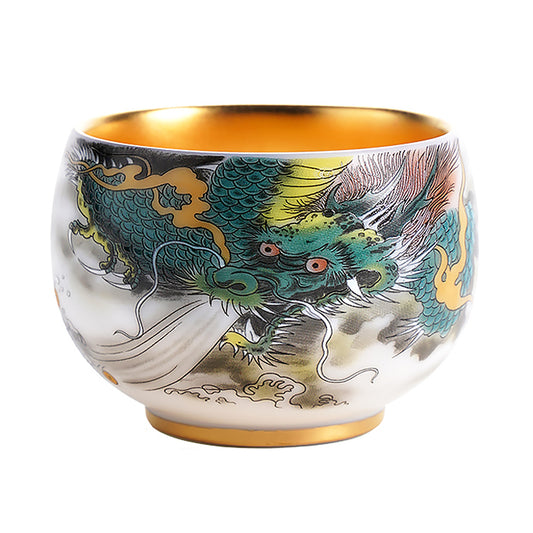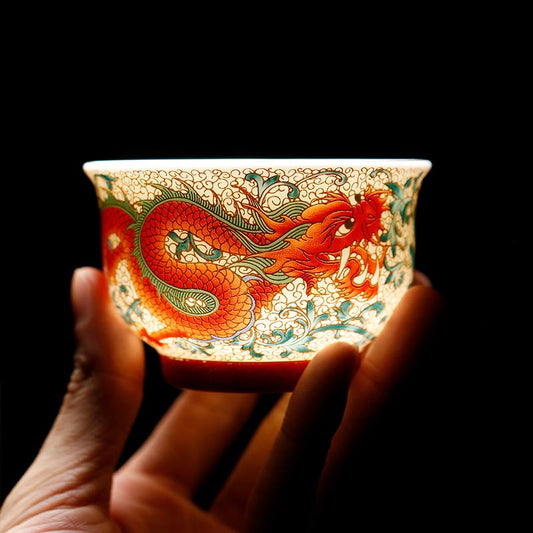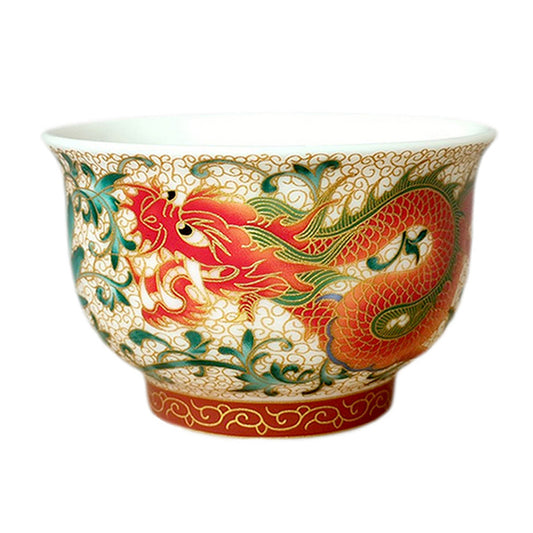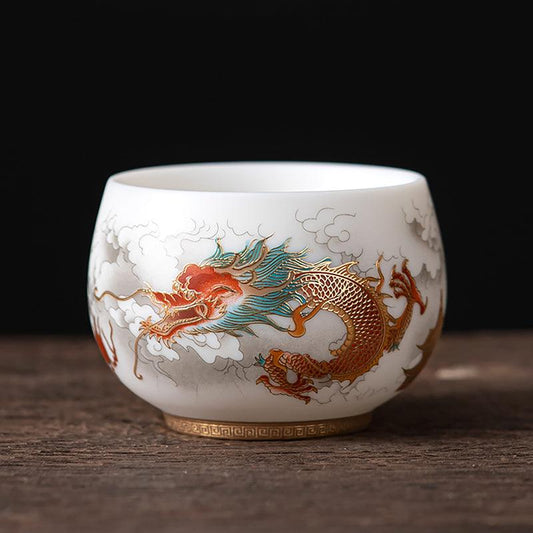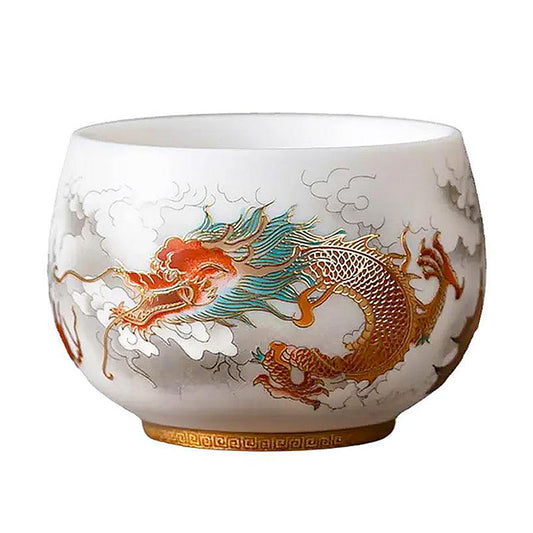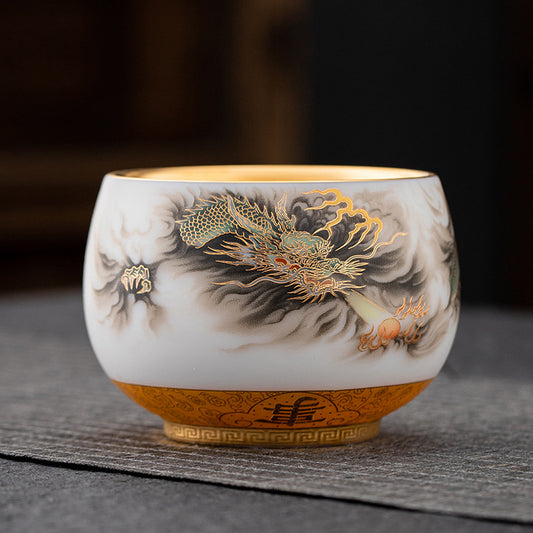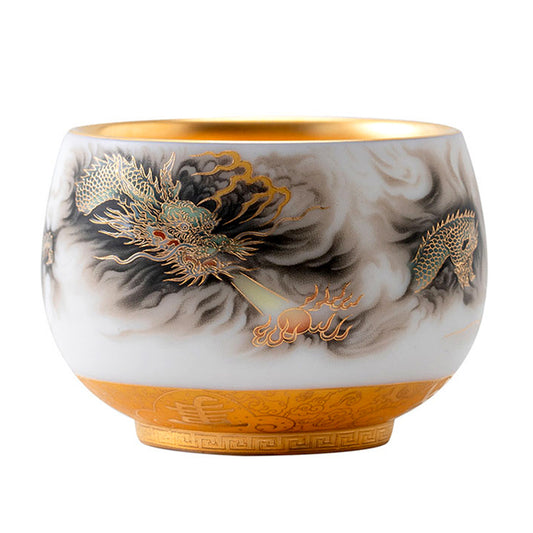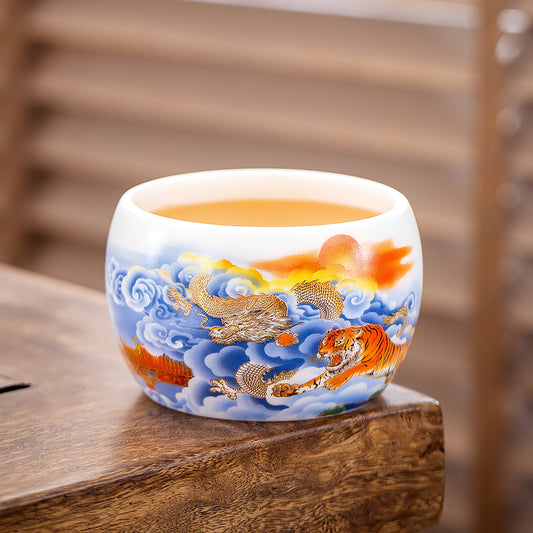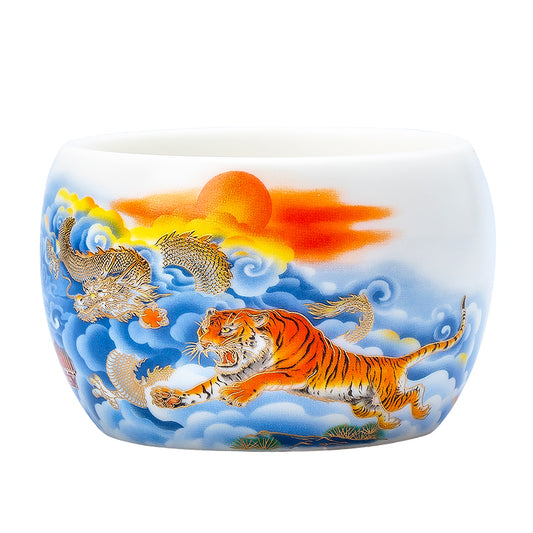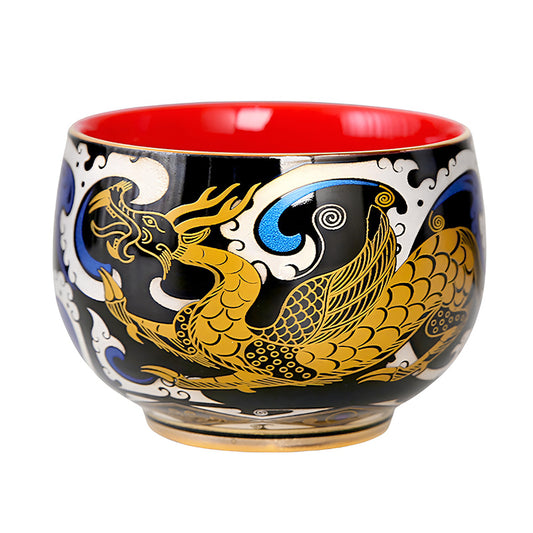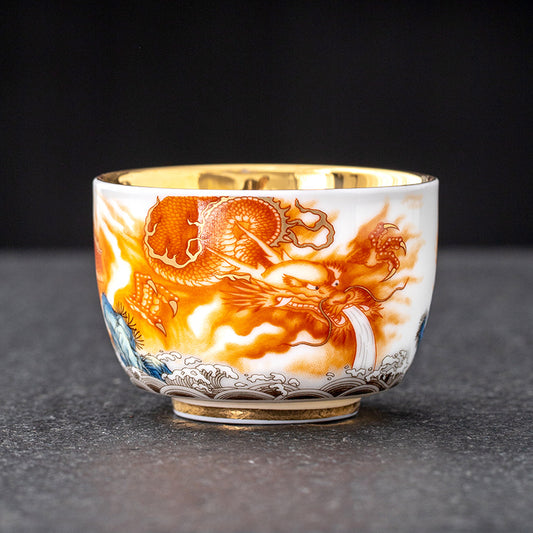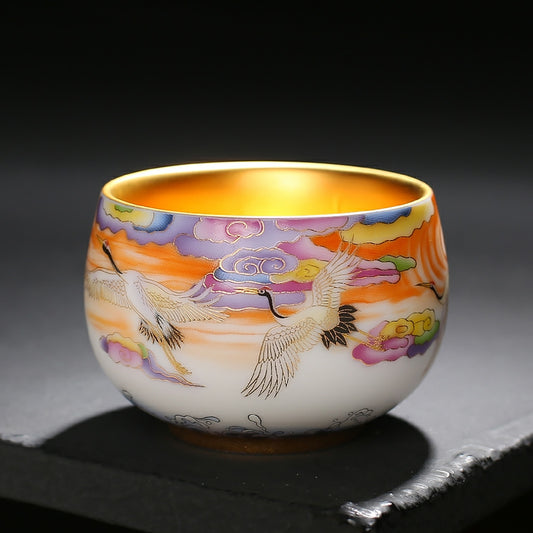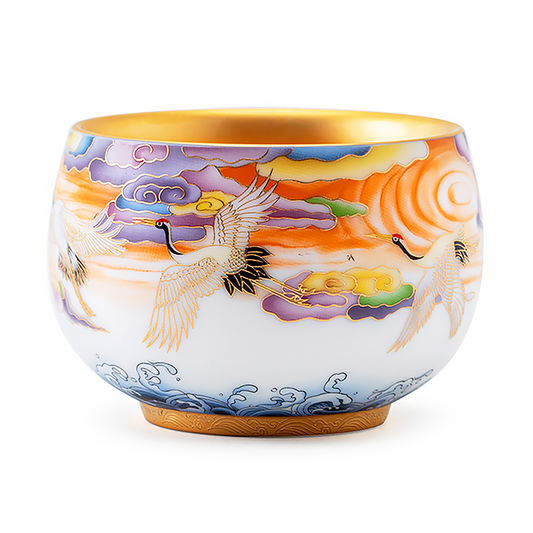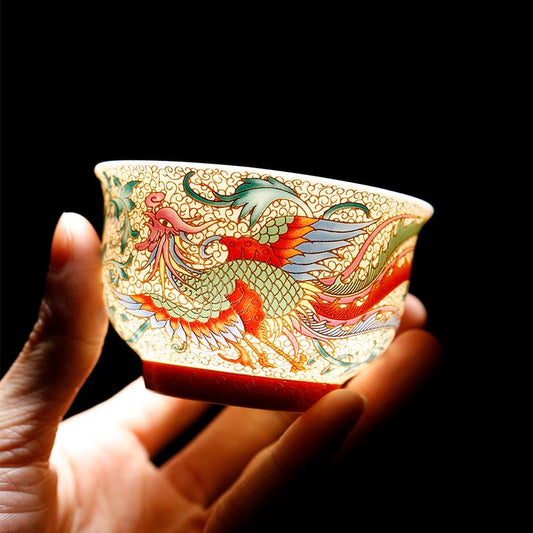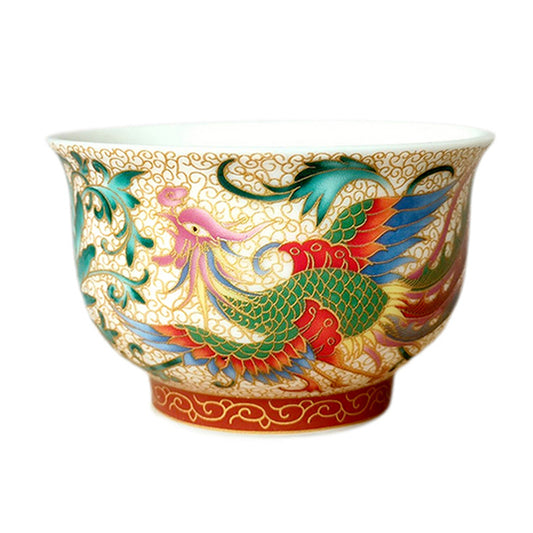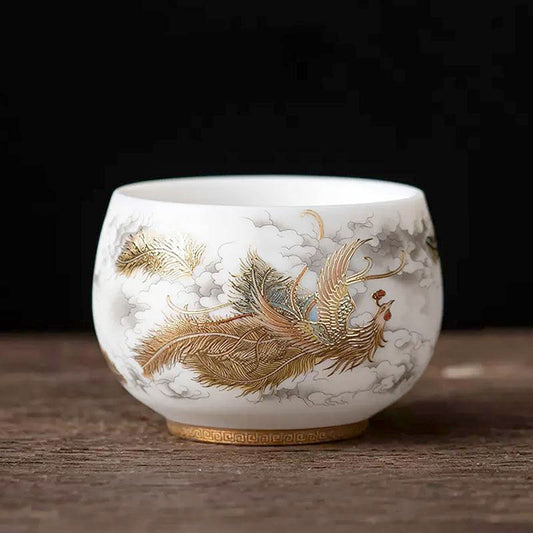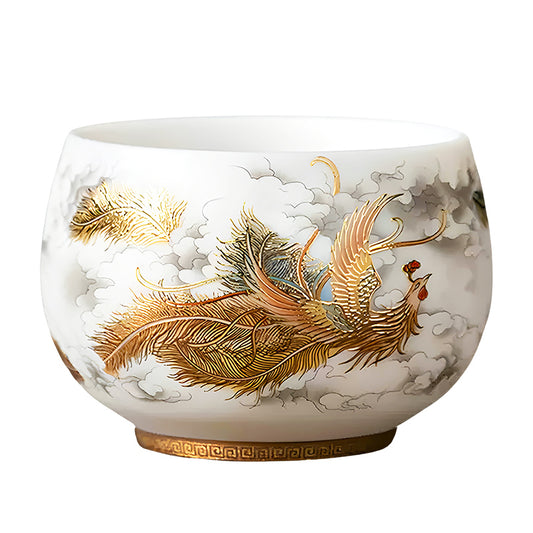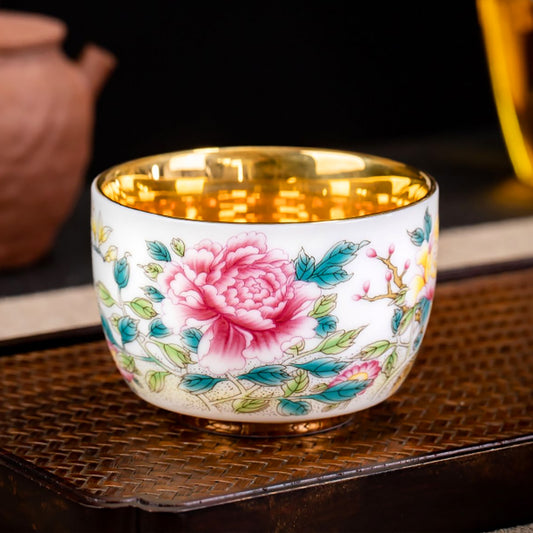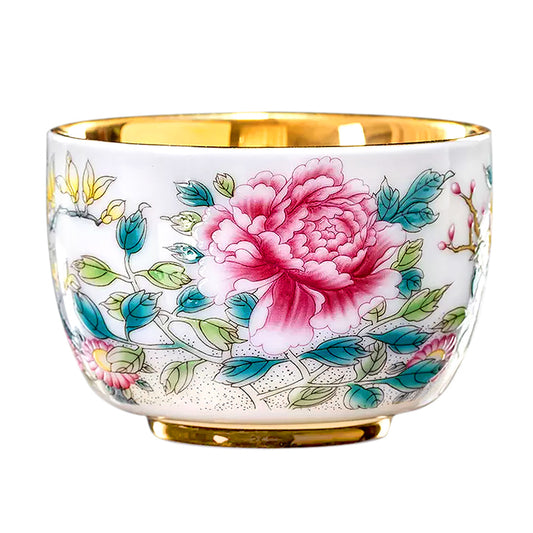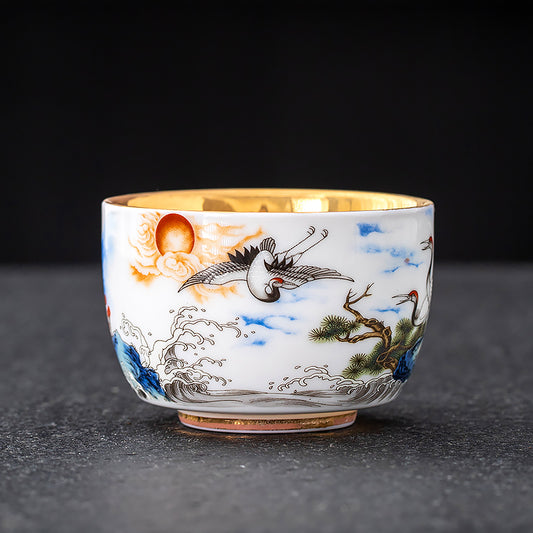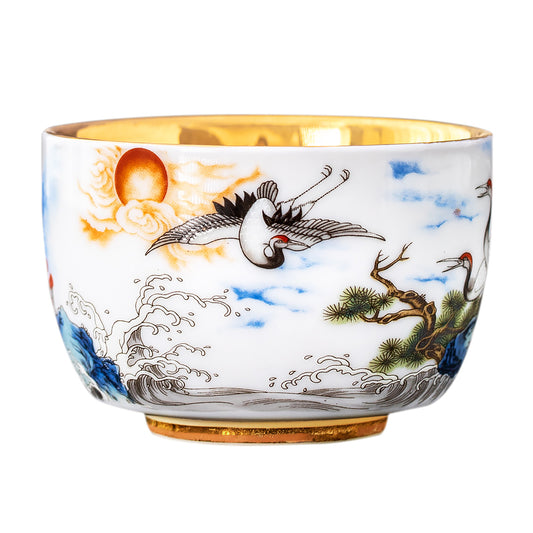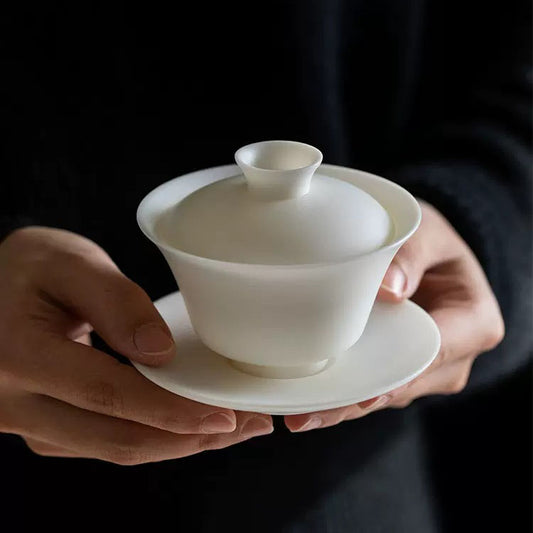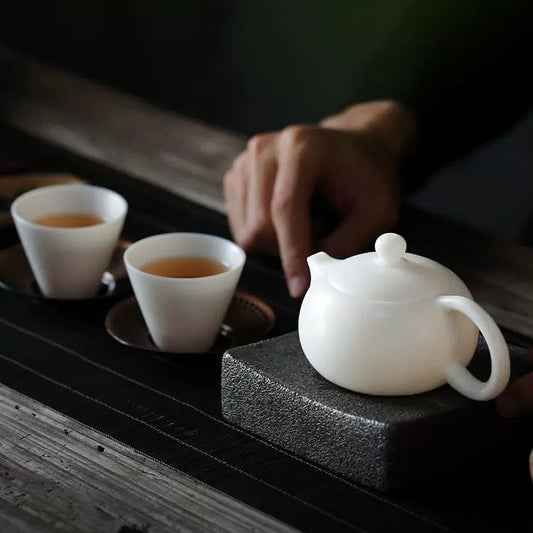
The King of Ceramic Art
Mutton Fat Jade
Elevate your tea drinking experience with mutton fat jade porcelain tea cups and mugs. Sip in style and revel in the delicate beauty of this timeless material, prized for its luminous texture and unique character.
Shop now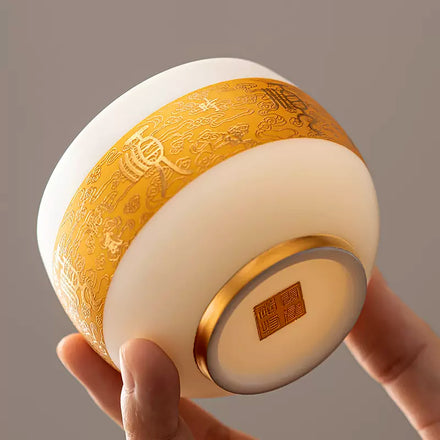
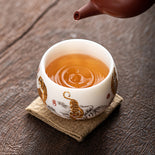
kingwares
Mutton Fat Jade Tea Cups
Indulge in the luxurious beauty of mutton fat jade porcelain, the pinnacle of ceramic art. Crafted with care and precision, each piece is a masterpiece of elegance and sophistication.
Shop now
How to Make Mutton Fat Jade Porcelain?
The process of making mutton fat jade porcelain is a complex and labor-intensive one that requires a great deal of skill and expertise. Here are some general steps involved in the process:
-
1
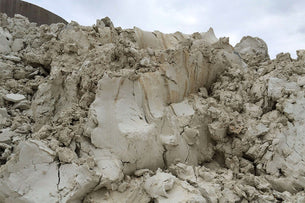
Mixing the materials: The raw materials for mutton fat jade porcelain typically include kaolin clay, feldspar, and other minerals. These materials are mixed together in specific proportions to create a homogenous blend.
-
2
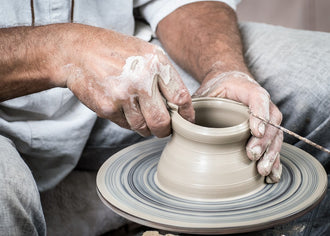
Shaping the porcelain: The blended materials are then shaped into the desired form, such as a tea cup or teapot, using techniques such as throwing, casting, or hand building.
-
3
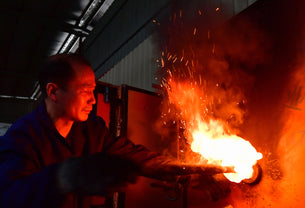
Drying and firing: Once shaped, the porcelain is allowed to dry completely before being fired in a kiln at high temperatures. The first firing, known as the bisque firing, removes any remaining moisture from the porcelain and prepares it for glazing.
-
4

Glazing: After the bisque firing, the porcelain is dipped into a glaze mixture, which can contain various ingredients depending on the desired effect. The glaze is then allowed to dry before the porcelain is fired again at high temperatures to fuse the glaze to the surface of the porcelain.
-
5
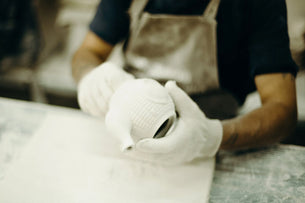
Finishing: Once fired and cooled, the mutton fat jade porcelain can be polished, painted, or decorated with intricate designs using various techniques such as underglaze painting, overglaze enameling, or carving.
-
6

Final firing: Depending on the desired effect, the porcelain may undergo one or more final firings at lower temperatures to create a specific color or texture.
Mutton Fat Jade Mugs
You can enjoy a bigger serving of tea without needing to refill your cup as often. Tea mugs can be used for a variety of different teas, including loose leaf teas, tea bags, and even herbal infusions. This makes them a versatile choice for any tea lover.
Subheading-
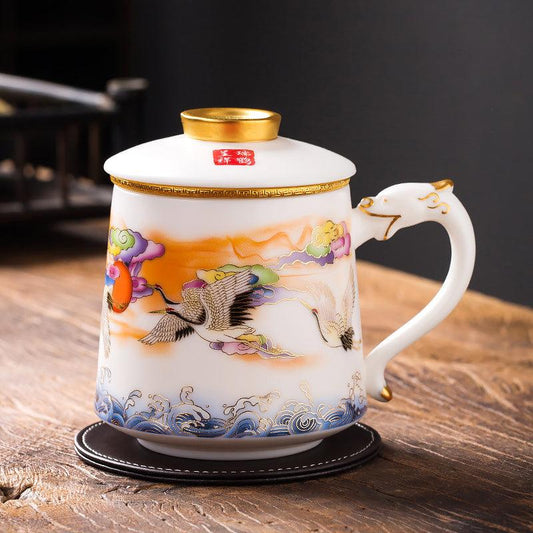 Long-lived Cranes
Long-lived Cranes
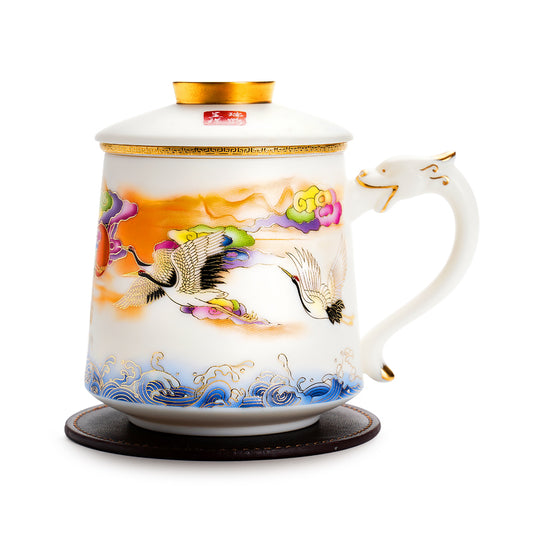 Vendor:Kingwares
Vendor:KingwaresLong-lived Cranes
Quick view- Regular price
- $89.99 USD
- Sale price
- $89.99 USD
- Regular price
-
$159.99
-
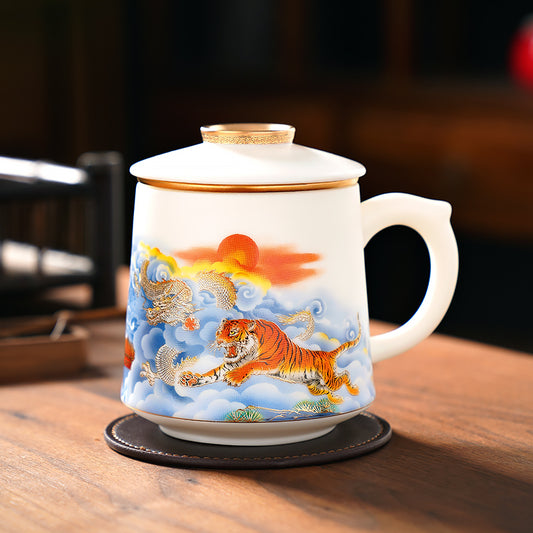 Dragon & Tiger
Dragon & Tiger
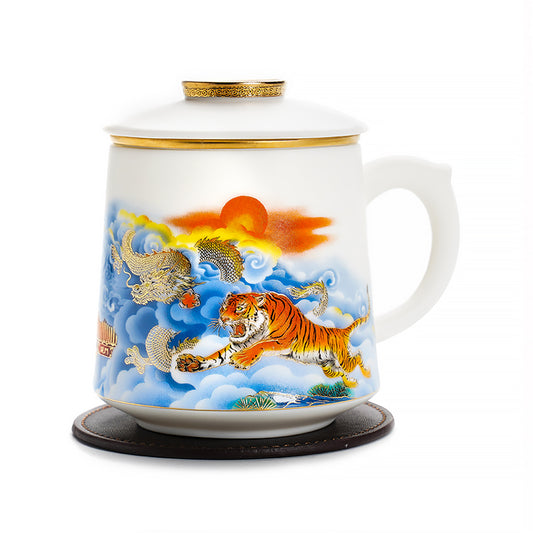 Vendor:Kingwares
Vendor:KingwaresDragon & Tiger
Quick view- Regular price
- $89.99 USD
- Sale price
- $89.99 USD
- Regular price
-
$159.99
-
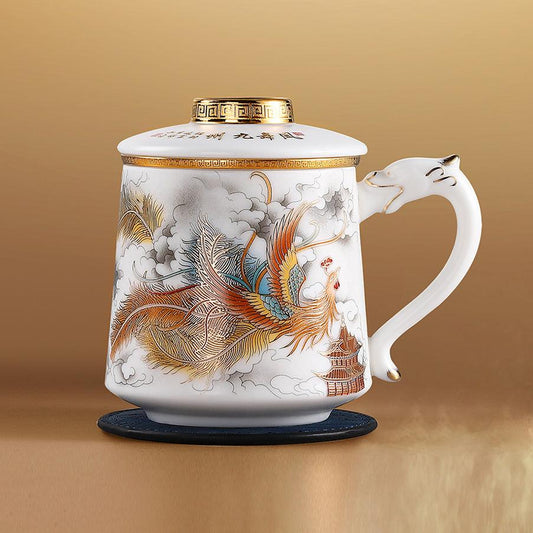 Mystical Phoenix
Mystical Phoenix
 Vendor:Kingwares
Vendor:KingwaresMystical Phoenix
Quick view- Regular price
- $89.99 USD
- Sale price
- $89.99 USD
- Regular price
-
$159.99
-
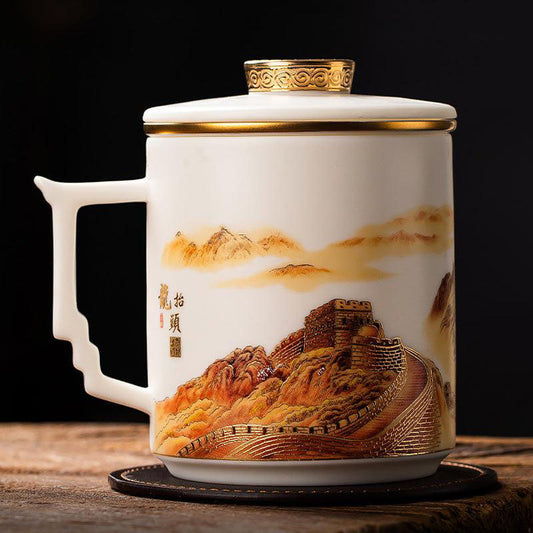 Great Wall
Great Wall
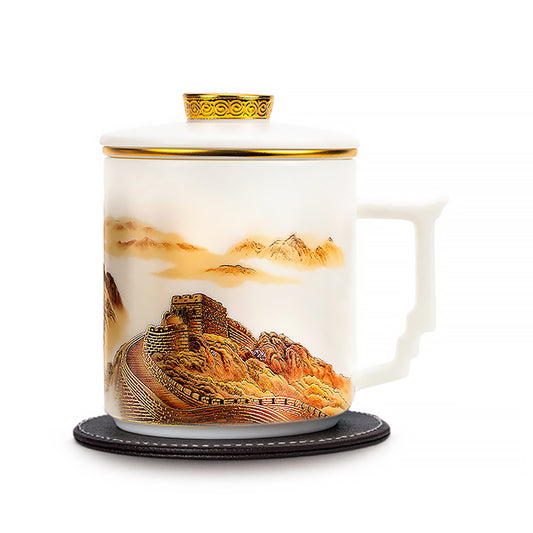 Vendor:Kingwares
Vendor:KingwaresGreat Wall
Quick view- Regular price
- $89.99 USD
- Sale price
- $89.99 USD
- Regular price
-
$159.99
-
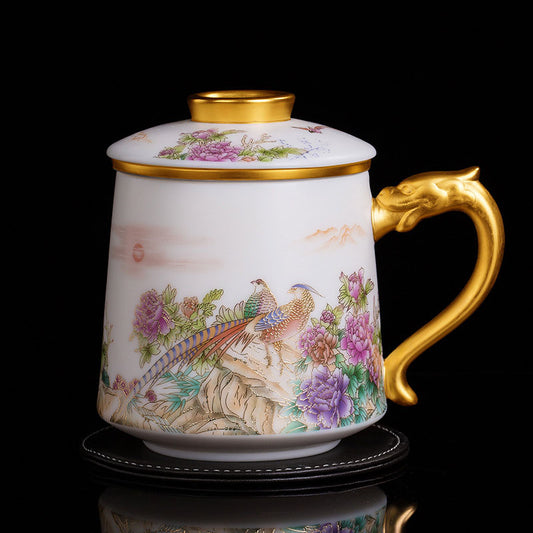 Pheasant & Flower
Pheasant & Flower
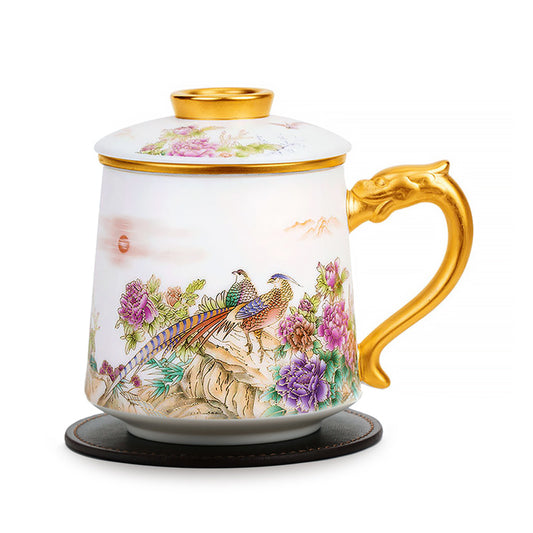 Vendor:Kingwares
Vendor:KingwaresPheasant & Flower
Quick view- Regular price
- $99.99 USD
- Sale price
- $99.99 USD
- Regular price
-
$179.99
-
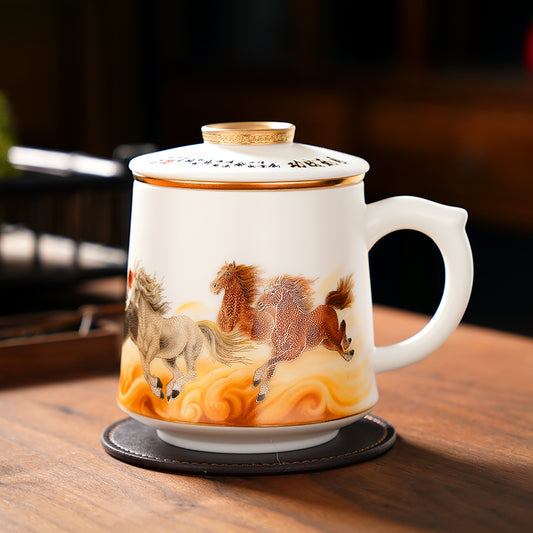 Painting of Steeds
Painting of Steeds
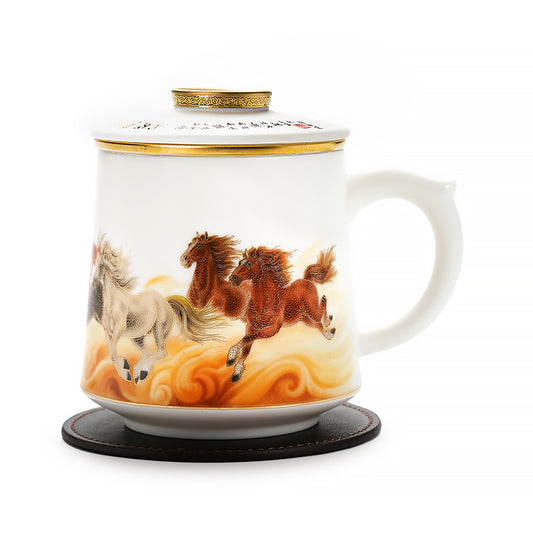 Vendor:Kingwares
Vendor:KingwaresPainting of Steeds
Quick view- Regular price
- $89.99 USD
- Sale price
- $89.99 USD
- Regular price
-
$159.99
-
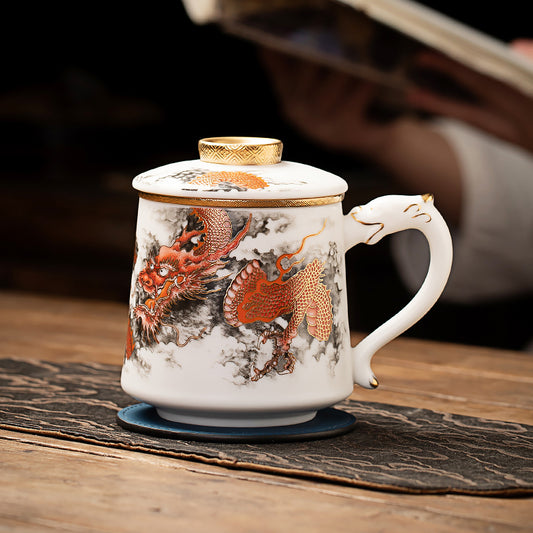 Red Dragon
Red Dragon
 Vendor:Kingwares
Vendor:KingwaresRed Dragon
Quick view- Regular price
- $89.99 USD
- Sale price
- $89.99 USD
- Regular price
-
$159.99
-
 Mountain Landscape
Mountain Landscape
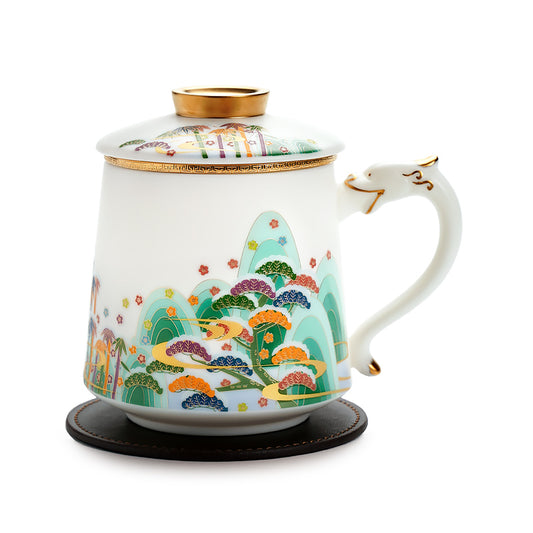 Vendor:Kingwares
Vendor:KingwaresMountain Landscape
Quick view- Regular price
- $89.99 USD
- Sale price
- $89.99 USD
- Regular price
-
$159.99
Mutton Fat Jade Teapots
Experience the exquisite quality and artistry of mutton fat jade porcelain, the perfect addition to any home or collection. Treat yourself or a loved one to the ultimate in porcelain perfection, and savor the beauty and elegance of mutton fat jade for years to come.
Subheading-
Green Dragon
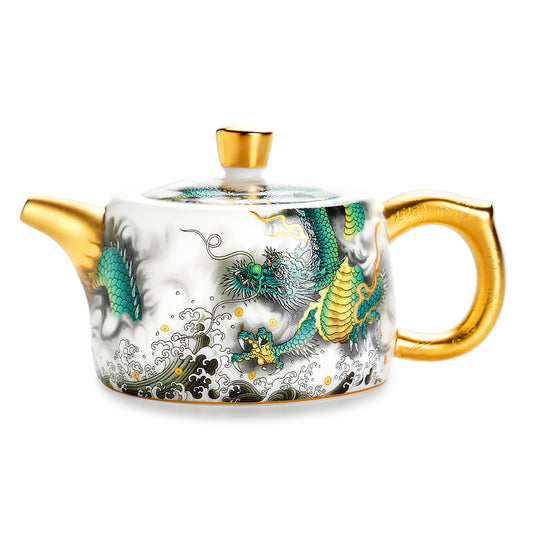
Green Dragon
Quick view- Regular price
- $79.99 USD
- Sale price
- $79.99 USD
- Regular price
-
$159.99
-
Dragon & Tiger
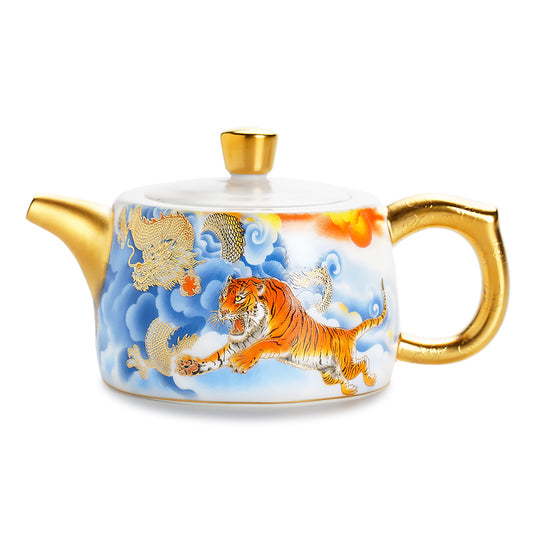
Dragon & Tiger
Quick view- Regular price
- $79.99 USD
- Sale price
- $79.99 USD
- Regular price
-
$159.99
-
Colorful Phoenix
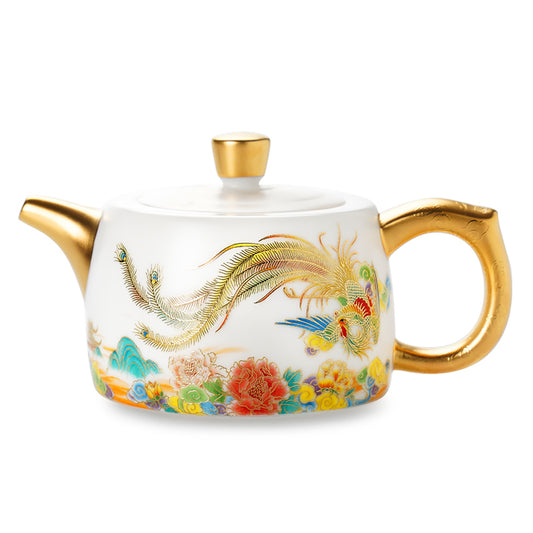
Colorful Phoenix
Quick view- Regular price
- $79.99 USD
- Sale price
- $79.99 USD
- Regular price
-
$159.99
-
Painting of Steeds
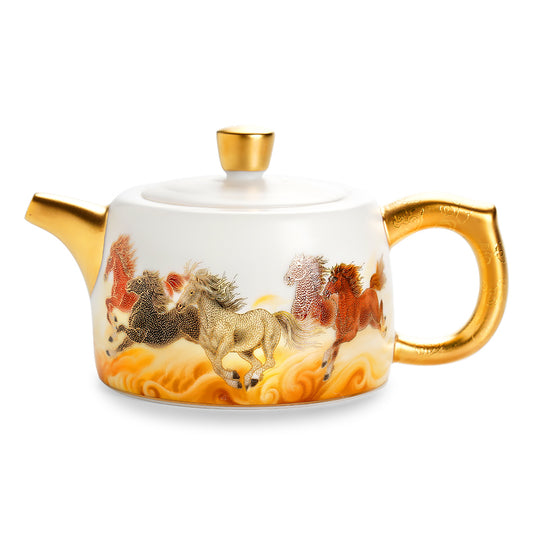
Painting of Steeds
Quick view- Regular price
- $79.99 USD
- Sale price
- $79.99 USD
- Regular price
-
$159.99
-
Mountains View
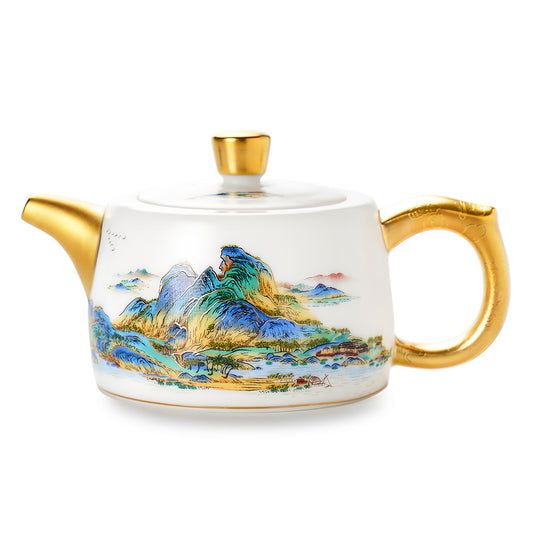
Mountains View
Quick view- Regular price
- $79.99 USD
- Sale price
- $79.99 USD
- Regular price
-
$159.99
What is Mutton Fat Jade?
Mutton fat jade is so named because of its color and texture, which resemble the fat found on a piece of mutton or lamb. The stone itself has no direct connection to mutton or fat, and is not made from animal products. It is a type of nephrite jade, a mineral composed of calcium, magnesium, and iron, and is formed through geological processes that occur over millions of years. The term "mutton fat" is used purely as a descriptive term to describe the stone's appearance and texture.


